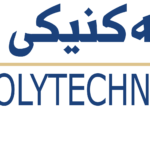- Ashqi Mohammed Kareem
- [email protected]
- 0750 443 1335
- Ashqi pdf
-
Hematological malignancies are among the many diseases that exhibit P53 mutations. The main aim of the present study to assess the prevalence of P53 gene mutations among Acute Myeloid Leukemia and Acute Lymphoblastic Leukemia cases. We conducted a comprehensive evaluation using P53 mutational screening through hematological changes, bone marrow aspiration reports, PCR, and gel electrophoresis in the current research to assess the P53 mutation frequencies in AML and ALL patients.
This study evaluated 61 patients of Acute Leukemia referred from Nanakaly Hospital for Blood Diseases and Cancer in Erbil-City, from July 1, 2021, to March 11, 2022. For a total of 61 patients (29 patients with Acute Myeloid Leukemia and 32 patients with Acute Lymphoblastic Leukemia), which had been selected for the study depending on the Complete Remission/Partial Remission association, we compared the CBC parameters, immunophenotyping CDs, and bone marrow reports. Of these, 40 samples (20 from AML and 20 from ALL) were followed up for DNA extraction, PCR amplification and visualized by Gel Electrophoresis.
Overall 61 patients (29 AML patients achieved CR 24(82.7%) and PR 5(17.3%) and (32 ALL patients achieved CR 25(79.3%) and PR 7(20.7%). One of the important findings of our study, the P53 gene was mutated in all of AML and ALL patients. The most frequent positive CDs in AML patients, includes (CD13, CD33, MPO, HLADR, CD64, CD117, CD34), and the mean of them are (75%, 70%, 60%, 60%, 55%, 55% and 50% respectively) , and according to CR/PR association those CDs were statistically showed significant (CD64, CD117, CD13, CD33, CD34, MPO, TdT and CD38,), p-values (<0.0001, <0.0001, 0.0012, 0.0012, 0.0067, 0.0103, 0.0209 and 0.0235 respectively). The most frequent CDs in ALL patients, includes (CD19, CD79a, TdT, HLADR, CD10, CD22 and CD34), the mean of them are (95.24%, 95.24%, 95%, 90%, 85.71%, 80% and 50% respectively), and according to CR/PR association, those CDs markers(CD2, CD10, CD19, CD22, CD34, CD79A and TdT) were statistically showed significant, with p-values (<0.0001, <0.0001, <0.0001, <0.0001, <0.0001, 0.0003 and 0.0124 respectively). The majority of bone marrow aspirates in AML cases during the post-induction stage were primarily hypercellular(100%) in CR group and hypercellular (85%) in PR group, and the p-value depending on CR/PR ratio showed mildly significant for Cellular fragments (0.0068), also the blast percentages were significant. For instances of ALL, the bone marrow aspiration reports were primarily hypercellular(100%) in CR group and hypercellular (45%) in PR group, and the p-value of CR/PR ratio showed strongly significant(<0.0001). The present study identified by Sanger sequencing, 28 mutations from 17 mutated samples(from 20 samples of AML and 20 samples of ALL), which includes, 17 mutations from 10 samples of AML and 11 mutations from 7 samples of ALL.
We conclude that P53 were highly mutated in AML and ALL cases and immunophenotyping CD markers significantly expressed in acute leukemias, also the reports showed the hypercellular bone marrow.
- Erbil Technical Health College
- Medical Laboratory Technology Department
- Hematology


